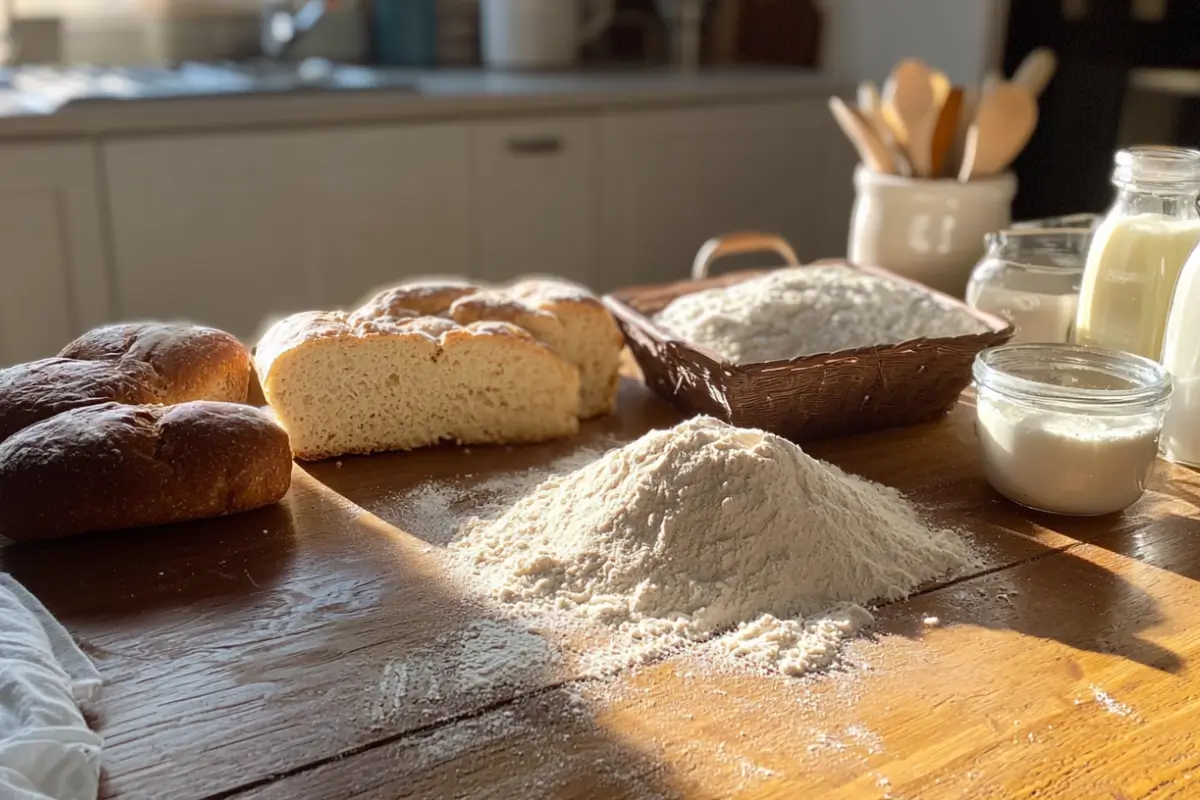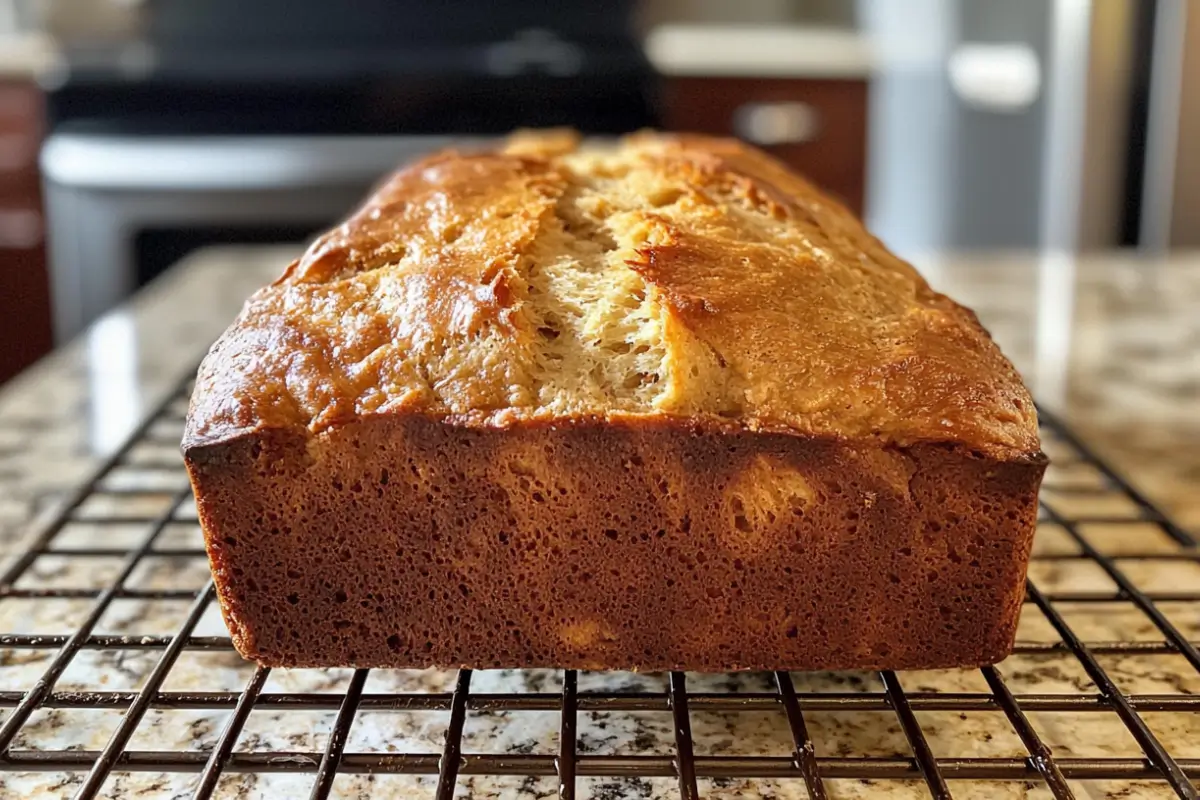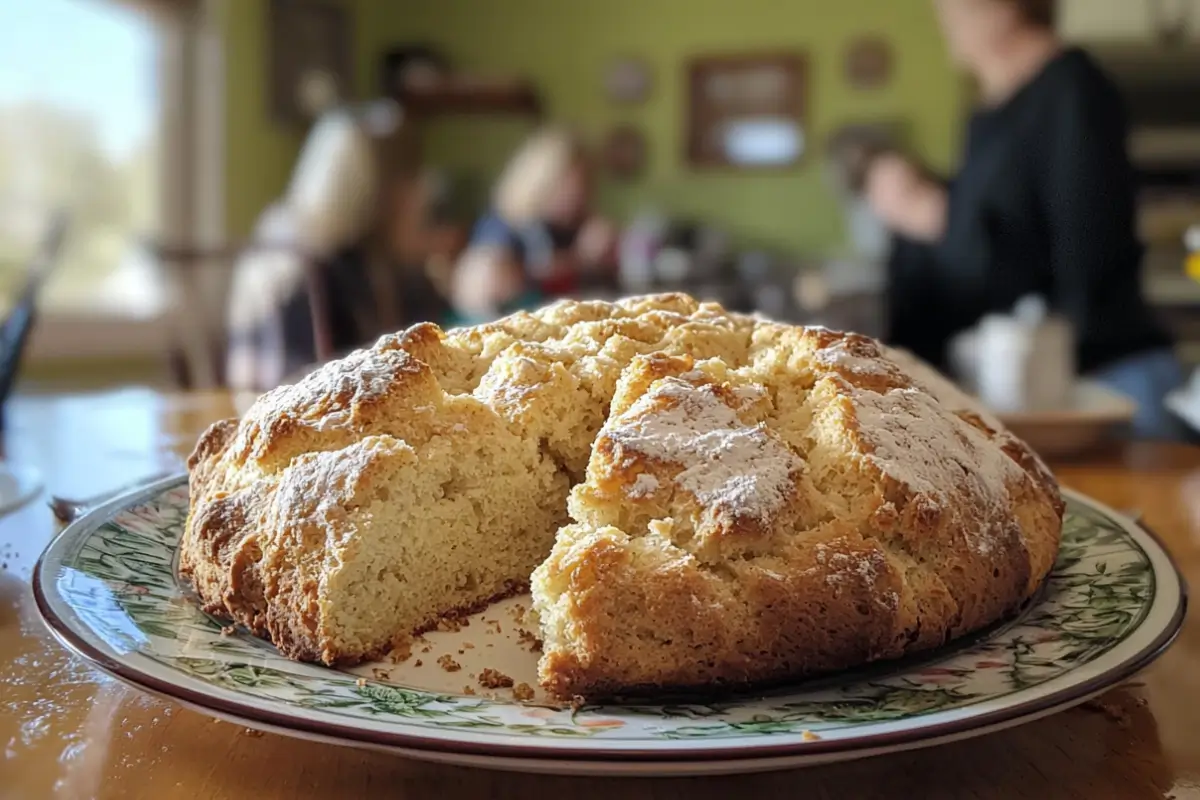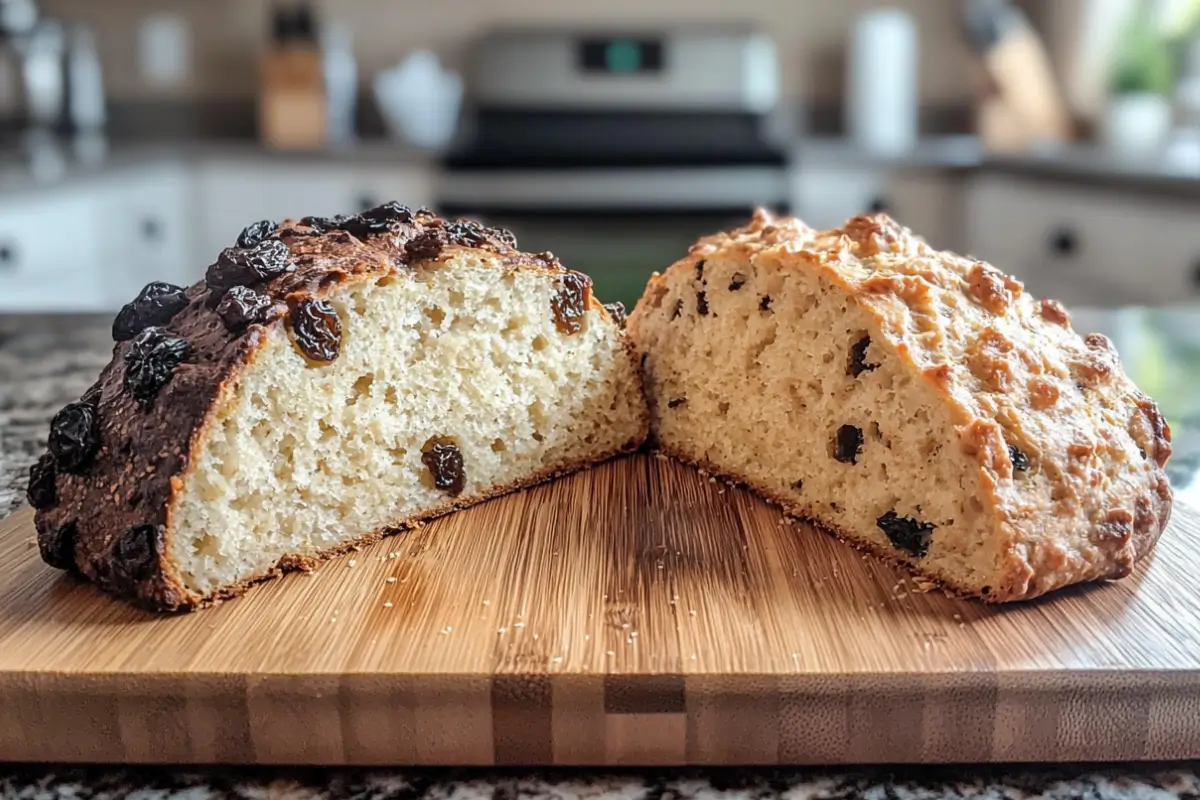Grandma’s Irish Soda Bread: a taste of tradition that evokes warmth and comfort. This simple yet satisfying bread has graced tables for generations, offering a delicious slice of Irish heritage. From cozy family gatherings to bustling holiday feasts, Irish soda bread has held a special place in Irish kitchens and hearts. This comprehensive guide delves into the history, ingredients, techniques, and variations behind creating the perfect loaf, just like Grandma used to make.
A Journey Through Time: The History of Irish Soda Bread
Irish soda bread’s origins are deeply intertwined with the socio-economic landscape of 19th-century Ireland. Baking soda, a relatively new invention at the time, became a game-changer for families in rural Ireland. Unlike yeast, which required time and specific conditions to activate, baking soda offered a quick and accessible leavening agent. This allowed families, often without conventional ovens, to bake bread easily on griddles over open fires. The simplicity of ingredients also aligned with the limited resources available in many Irish households.
This resourcefulness birthed a tradition that quickly spread throughout the country. Irish soda bread became a staple, a symbol of resilience and ingenuity. Each family developed their own unique variations, passing down cherished recipes through generations, much like the recipe for Grandma’s Irish Soda Bread we’ll explore here.
Gathering Your Provisions: Ingredients for the Best Irish Soda Bread

The beauty of Irish soda bread lies in its simplicity. This recipe focuses on quality ingredients, readily available in most pantries:
- 4 cups all-purpose flour (or a gluten-free blend – see notes below)
- 1 teaspoon baking soda
- 1 teaspoon salt
- 1 3/4 cups buttermilk (or a non-dairy alternative – see notes below)
Ingredient Notes & Substitutions: A Deeper Dive
Flour: While all-purpose flour is traditional, feel free to experiment! Using whole wheat flour, or a combination of all-purpose and whole wheat, adds a delightful nutty flavor and a heartier texture. For those with gluten sensitivities, various gluten-free blends work remarkably well, ensuring everyone can enjoy this classic treat. Just be sure to choose a blend designed for baking bread.
Buttermilk: This ingredient is key to the magic of Irish soda bread. The acidity of buttermilk reacts with the baking soda, creating the airy texture characteristic of a perfect loaf. Don’t have buttermilk on hand? No problem! You can easily make a substitute by adding a tablespoon of lemon juice or white vinegar to regular milk. Let this mixture sit for 5 minutes to allow the milk to curdle slightly, mimicking the acidity of buttermilk.
Salt: A pinch of salt isn’t just for flavor; it also plays a crucial role in controlling the yeast activity (even though we’re using baking soda) and enhancing the overall taste of the bread.
From Dough to Delight: Step-by-Step Instructions

Preheat your oven to 450°F (232°C). This high heat creates the ideal environment for a quick rise and a beautifully browned crust. Lightly grease a baking sheet or cast iron skillet. This prevents sticking and ensures easy removal. While waiting for your soda bread to bake, you could also try making easy sourdough bagels for another homemade bread experience.
In a large bowl, whisk together the flour, baking soda, and salt. Whisking helps distribute the leavening agent and salt evenly throughout the flour, ensuring a consistent rise.
Make a well in the center of the dry ingredients. This creates a space to pour the wet ingredients into, facilitating the mixing process.
Pour the buttermilk into the well. Stir gently until just combined. Be careful not to overmix – this is crucial for a tender crumb.
Turn the dough out onto a lightly floured surface. Knead briefly, just enough to form a round loaf. Again, avoid overkneading.
Place the loaf on the prepared baking sheet. Cut a cross on the top with a sharp knife, about 1/4 inch deep. This iconic cross serves a practical purpose – it allows the heat to penetrate the center and helps the bread rise evenly. It’s also steeped in Irish folklore, symbolizing a blessing or warding off evil spirits.
Bake for 30-40 minutes, or until golden brown and the bottom sounds hollow when tapped. This indicates that the bread is fully cooked through.
Secrets to Success: Tips for Baking Perfect Irish Soda Bread
Avoid overmixing: Overmixing develops the gluten in the flour, resulting in a tough loaf. Mix just until the ingredients are combined—a shaggy dough is perfectly fine and will yield a more tender texture.
Use a light touch: Handle the dough gently to maintain its tenderness. Unlike yeast bread, soda bread doesn’t need vigorous kneading. Simply bring the dough together with minimal handling to avoid making it dense.
Bake immediately: Once the dough is mixed, bake it right away to ensure a good rise. The baking soda starts working as soon as it comes into contact with the buttermilk, so delaying will reduce its effectiveness. Make sure your oven is preheated so you can get the dough in as soon as it’s ready.
Score the top: Cutting a deep “X” on top before baking helps the bread expand properly in the oven and bake evenly.
Check for doneness: The bread should be golden brown and sound hollow when tapped on the bottom. Let it cool on a wire rack before slicing to keep the texture just right.
Beyond the Basics: Variations on Grandma’s Recipe
Sweet Soda Bread: For a touch of sweetness, add 1/4 cup sugar and 1/2 cup raisins or currants to the dough. The dried fruit adds bursts of flavor and a chewy texture, making this variation perfect for breakfast or an afternoon treat. Serve it warm with butter, alongside a cup of tea, or with a dollop of clotted cream for an extra indulgent touch. If you’re in the mood for something sweet, you might also enjoy these easy homemade donuts, another delightful treat to complement your soda bread.
Herbed Soda Bread: Incorporate 1/4 cup of chopped fresh herbs, such as rosemary, thyme, or chives, to give the bread a savory twist. The fragrant herbs enhance the flavor, making this version a great accompaniment to soups, stews, or a hearty salad. It’s especially delicious when served warm with a spread of butter or a drizzle of olive oil. For a balanced meal, consider pairing it with a classic avocado toast, packed with nutrients and flavor.
Cheesy Soda Bread: Mix in 1 cup of shredded cheddar cheese for a rich, savory loaf that’s perfect for breakfast, brunch, or as a side for dinner. The cheese creates a slightly crispy crust while keeping the inside soft and flavorful. For an extra kick, add a sprinkle of red pepper flakes or a pinch of black pepper. This bread pairs wonderfully with eggs, grilled meats, or a bowl of creamy soup. If you love cheese, try spreading a generous layer of cream cheese on a bagel for another satisfying breakfast idea.
Frequently Asked Questions about Irish Soda Bread
What is special about Irish soda bread?
Irish soda bread is unique for its quick preparation, simple ingredients, and reliance on baking soda for leavening instead of yeast, which eliminates the need for long rising times. This makes it a convenient and accessible bread for bakers of all levels, whether you’re an experienced baker or trying homemade bread for the first time. Its rustic charm and hearty texture make it a timeless favorite.
How are you supposed to eat Irish soda bread?
Irish soda bread is best enjoyed fresh and warm, when its crust is crisp and the inside remains soft and tender. Slice it thickly and serve with butter, jam, or cheese for a simple yet satisfying treat. It’s also delicious with savory toppings like smoked salmon, pâté, or even a drizzle of honey for a sweet-savory contrast. Pair it with a hot cup of tea or a hearty stew for a truly comforting experience.
What is the difference between American and Irish soda bread?
American soda bread often includes sugar, eggs, and raisins, giving it a richer, sweeter flavor and a denser texture. This contrasts with traditional Irish soda bread, which is more rustic, savory, and crumbly, relying solely on basic ingredients like flour, baking soda, salt, and buttermilk. While both versions are delicious, the American variation is often enjoyed as a lightly sweetened treat, whereas the Irish original is a hearty, everyday staple.
What is the myth behind Irish soda bread?
A common myth is that the cross cut on top of the bread wards off evil spirits, with some believing it offers a blessing or protection. While the exact origin of this tradition is uncertain, the cross cut serves a practical purpose: it allows heat to penetrate the center of the bread for even baking, ensuring a perfect rise. Beyond its functional role, the cross also adds a beautiful decorative touch, making the bread visually appealing and symbolizing the richness of Irish culture.
Conclusion: Baking a Legacy

Baking Grandma’s Irish Soda Bread is more than just following a recipe; it’s a rewarding experience that connects us to a rich culinary history. With this guide, you can confidently recreate this beloved bread and share the simple pleasure of a warm slice, just like Grandma used to make. For an authentic recipe, you can try Grandma McAndrew’s Irish Soda Bread. So gather your ingredients, preheat your oven, and embark on this baking journey – you’re not just making bread; you’re baking a legacy. Now it’s your turn to bake and share this delicious tradition!

